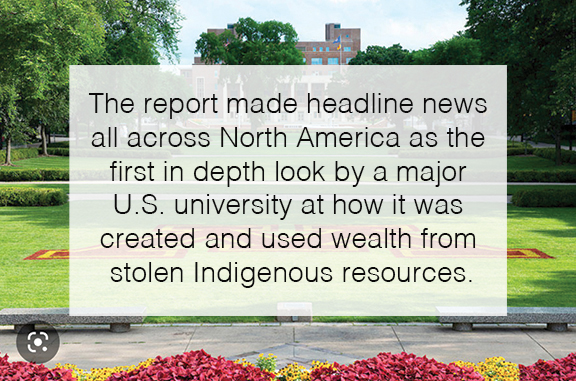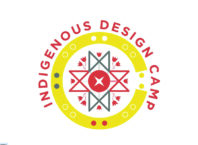By Lee Egerstrom
A research team from the University of Minnesota, the Minnesota Indian Affairs Council (MIAC) and Minnesota’s 11 Indigenous nations has laid out a thorough look at how the university was built on stolen land and resources.
It also suggests ways for Minnesota and the university to begin making amends.
The report, called the TRUTH Project (Towards Recognition and University-Tribal Healing), was released on April 11. (See the cover story in this issue.)
It offers guidance for how the University of Minnesota system, with its five campuses and multiple research sites, can build on inclusive experiences, its Indigenous roots, and on administrative and policy changes already underway – for both the institution and for the general public.
“This report just scratches the surface of the local history that is not taught in schools or widely known,” explained Robert Larsen, president of the Minnesota Indian Affairs Council (MIAC) and president of the Lower Sioux Indian Community.
“Only when we know better can we do better for our present and future together,” he said in a statement releasing the report. “I cannot say thank you enough to the team (that) endures the pain of researching, collecting and reporting this history for us all.”
The report made headline news all across North America as the first in depth look by a major U.S. university at how it was created and used wealth from stolen Indigenous resources.
Minnesota’s experience isn’t alone. There are currently 75 other universities from coast to coast called land grant universities that trace their origins to the Morrill Act of 1862 that took land and resources from tribes to create the federally-supported university system.
Not totally hidden but often ignored, the so-called land grant university system was exposed in a 2020 investigatory report (“Land Grab Universities”) by Robert Lee and Tristan Ahtone in High Country News magazine. There was no hiding from the past after that. The MIAC quickly called on the university in June that year to conduct its own investigation, leading to the TRUTH Project.
The land grant system was to encourage colonial settlement and “development” throughout rural areas and the then-western states and territories. To support this, it created a perpetual funding system for the land grant institutions from land and resources taken from Native tribes. This continues through the various land, mineral and timber programs still producing revenue.
It what researchers called “a Minnesota windfall,” these mining, timber harvesting, land sales, and iron royalties have totaled $591,119,846 that went into the Permanent University Fund (PUF) at the University of Minnesota.
Without adjusting for inflation, the researchers found the university actually received $191,875,315 from iron and taconite mineral leases between 1890 and 2020. (University scientists led efforts that developed taconite as a useful substitute for high-grade iron ore after World War II.)
Over the years, Minnesota municipalities have used PUF money for capital improvements and then repaid those funds plus interest, the report said. “This circulation of wealth did not benefit any of the Tribal Nations whose land those municipalities occupy today,” it said.
The university’s involvement in Minnesota wealth creation, however, goes back to its original founding.
The university’s Center for Urban and Regional Affairs, for instance, has noted the U.S. government paid Dakota peoples $2,309 for land in the Treaty of 1851, which was $0.02 cents per acre. In turn, researchers found, University of Minnesota sole that land for 251 times the original purchase price.
In what it calls “the deal and steal of the century,” the researchers state: “Not even the world’s most sophisticated Ponzi scheme could promise a 25,000 percent return on investment.”
The report shows how Minnesota’s early university Regents “committed genocide and ethnic cleansing of Indigenous peoples for financial gain, using the institutions as a shell corporation through which to launder lands and resources.”
By doing so, the TRUTH team said, the university “extracted vast amounts of wealth from Tribal Nations. The institutions must account for the perpetual harms that accompany that land expropriation.”
The report is more than 550 pages long. It also shows how misuse of ties with Indigenous populations has spilled over into research projections. One particularly troubling experience was revealed in medical research using Red Lake Nation people without their knowledge – a practice remindful of horrendous experiments conducted with Black people in some Southern states.
A large amount of Indigenous land was acquired following the U.S.-Dakota War of 1862 when Dakota people were rounded up, executed at Mankato or put in a concentration camp at Fort Snelling. They were eventually sent away from their ancestral lands.
Shannon Geshick, MIAC executive director and member of the Bois Forte Band of Chippewa, said the report “rips open” a history people just don’t know.
MIAC’s and Lower Sioux’s Larsen put in perspective what the TRUTH team sought to achieve: “I hope people realize these stories are meant to heal, not hurt anyone, and to help more people understand the true history of how we have gotten to the point we are (at) today. The work needs to continue.”
It comes out at a time when there is change underway at the university and public support for addressing Indigenous grievances are on the rise across all of North America. In Minnesota, extensive legislation for Indigenous programs is under consideration in the Legislature.
Among the latter are bills already passed in the Senate and House to provide $8.5 million to cover tuition and fees for tribal members attending Minnesota public universities colleges. While that is not as sweeping for Indigenous students as the TRUTH report recommends, but it is clearly movement forward.
There have been returns of land and properties to tribes. There has been returns of cultural, religious and human remains holdings. Regular consultations with the tribes have become routine and ongoing. Native Americans have been elevated to high, important posts in the university system.
Prominent faculty have called on the Regents to continue these steps, and to keep them in mind when seeking a new president. In an opinion piece, Professor emeritus Steven Miles (medicine and bioethics) reminded all: “As the Regents hire a new president, they should ensure that the candidate understands tha the university is not job one: Minnesota is.”
Another powerful and articulate voice is noteworthy. Former University of Minnesota Morris student body president Dylan Young (Rosebud Sioux) stressed in a letter to the editor of the Minneapolis Star Tribune (April 23) the importance of finding a good successor to Gabel.
He wrote: “At such a sensitive moment, it would be a misstep for the Board of Regents to hire someone who does not have firsthand experience with the nuances of tribal sovereignty or the systemic issues facing Native students.”
If Regents reject key recommendations in the TRUTH report, placing them at odds with tribal leaders, “could spell another PR disaster for the university,” he warned.
Copies of the TRUTH report, along with a helpful news release and abbreviated Executive Summary, can be accessed at the Minnesota Indian Affairs Council site at https://mn.gov/indian-affairs/truth-project.







